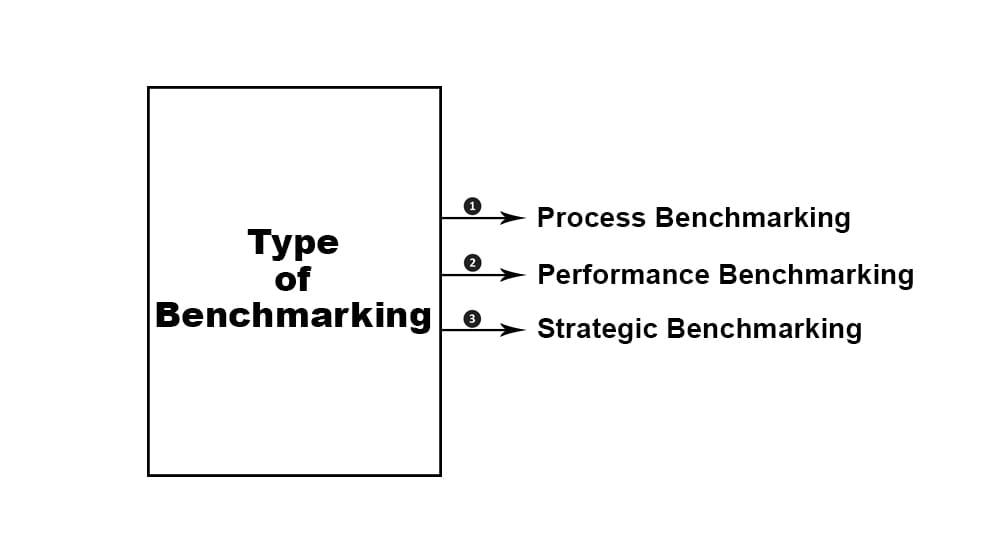Definition: Benchmarking is the process of comparing a company’s operations and performance to industry best practices.
Benchmarking is a method of evaluating several areas of a company’s processes and comparing them to industry leaders or competitors. This helps businesses find weak spots or gaps in their process so they can take steps to improve efficiency by adopting best practices.
Benchmarking is a continual activity; however, it might be a one-time event in some situations.
Benchmarking Process
Organizations use this method to identify the best-performing competitors in the same industry who use similar procedures, analyze them, and compare the results to their own. This enables businesses to identify areas where they may improve in order to provide better or similar products.
A benchmarking process requires the following steps.
- Identity Problems: Identifying problems or bottlenecks in the process is the first step in benchmarking. The problem should be real, not perceived.
- Identify Competitors Using Similar Processes: For comparison, selected entities should be using similar processes. Otherwise, a comparison will provide an ineffective outcome. The identified industry must be as close as possible in operations and processes.
- Study the Competitor Processes: After identifying the competitors, organizations study them thoroughly to understand competitors’ performance and what makes them different.
- Compare the Performance: This is the key step. Here, a business compares its processes with the competitors objectively. To find the weaknesses in their processes and operations, they review how the competitor is doing it in a better way. Then they come up with a process improvement plan based on this comparison to improve their processes and efficiency.
- Implement the Process Improvement Plan: In this stage, the organization changes its processes and operations to align with the latest best industry practices.
- Review and Feedback: Implementing the changes is not enough. Organizations review their process and see if the performance and efficiency are improved. They listen to the feedback received from the employees and customers and take corrective actions based on it.
Types of Benchmarking
Benchmarking can be done both internally and externally. Organizations use internal benchmarking to compare the performance of different groups or units inside the same company. External benchmarking compares their operations or processes to similar processes used by other organizations.

Under these categories, benchmarking can be divided into three types:
Process Benchmarking: Here, businesses compare their processes with industry leaders, find the deficiencies in their processes, and make changes to improve efficiency.
Strategic Benchmarking: Strategic benchmarking is similar to process benchmarking but takes it one step further. Here, businesses strategically analyze the process to make it more cost-effective and efficient.
Performance Benchmarking: Benchmarking for performance is a little more complex than the other two types. Businesses evaluate the performance indicators and procedures of competitors and make improvements to their own procedures on the ground level. Changing an existing procedure or introducing a new procedure is difficult. However, results sometimes can be rewarding.
Benefits of Benchmarking
- Competitive Analysis: Benchmarking allows businesses to do competitive analysis to understand competitor processes and learn the best practices.
- Monitor & Control Performance: Benchmarking allows businesses to look deep into their processes. Since benchmarking is a continuous process, businesses can continuously monitor their performance.
- Employee Ownership: Businesses can involve stakeholders for their feedback and involve them in the improvement process. Employees will feel involved, feel motivated, and take ownership of responsibilities. It encourages employee ownership.
- Improve the Processes: Benchmarking is a continuous process where businesses find weaknesses and improve the process. Being regular practice, it improves the efficiency continuously.
- Helps in Planning: Benchmarking can help set new goals and objectives that will help businesses develop their long-term planning.
Summary
Benchmarking is a key process that can provide an organization with competitive advantages and an opportunity to improve its operations and efficiency. It compares the key metrics from the best industry performers and provides data to work upon. It helps organizations find weak areas and processes so they can find ways to improve their processes for better efficiency.
